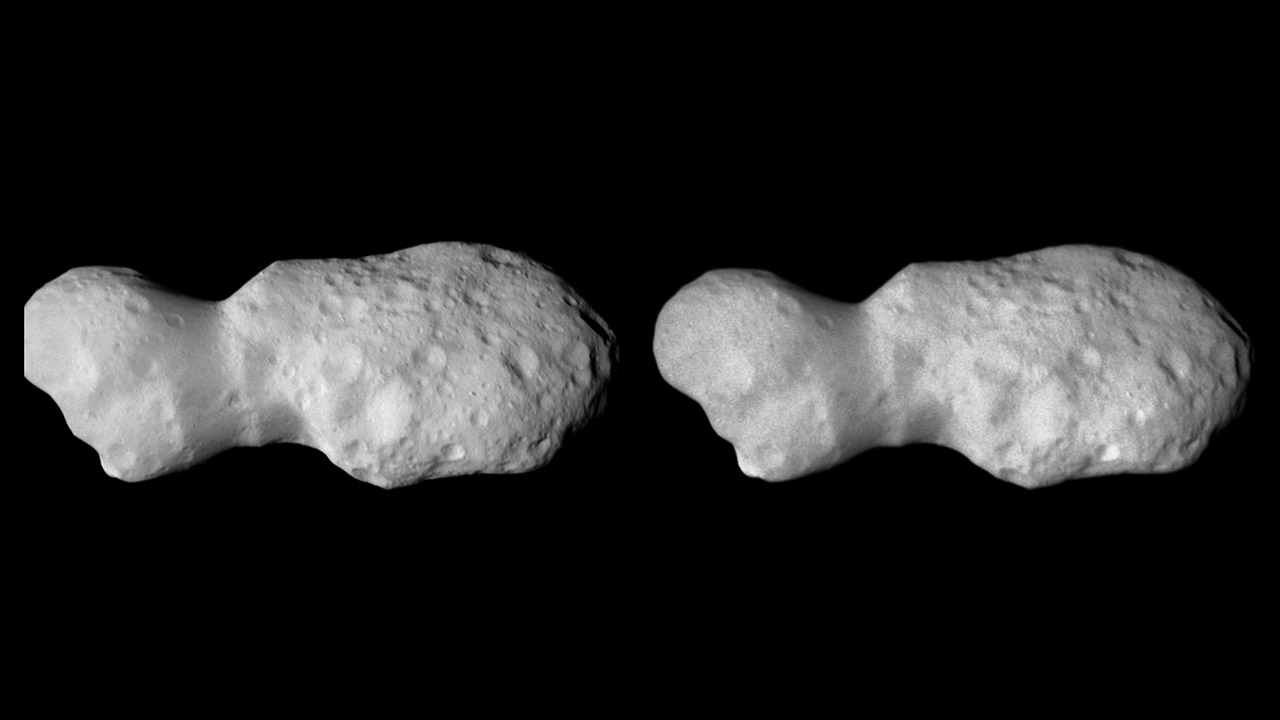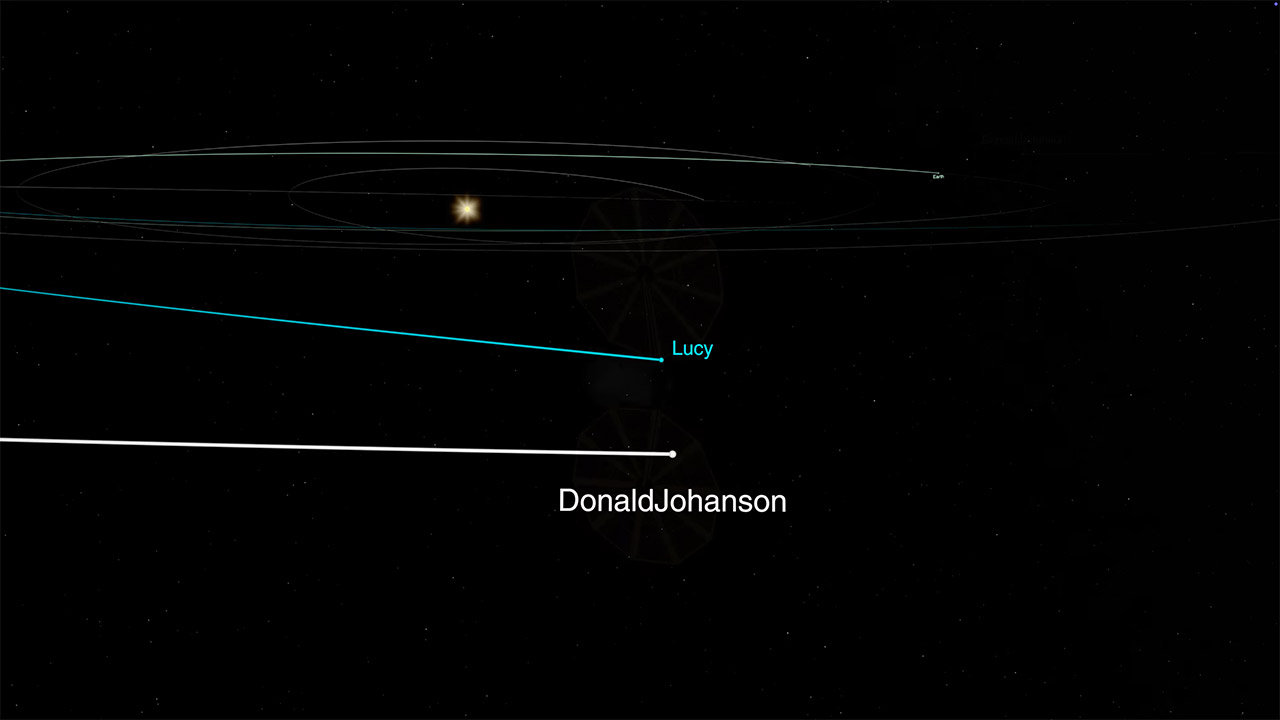
On April 20, 2025, from just 1,700 miles away, the Lucy spacecraft snapped a jaw-dropping high-res photo of asteroid Donaldjohanson, a space rock that’s been spinning through the solar system for 150 million years. Captured by the Lucy Long-Range Reconnaissance Imager (L’LORRI), the image shows a rugged, stretched-out asteroid, about 5 miles long and 2 miles wide, looking a bit like a cosmic potato with details as small as 130 feet across.
Named after the anthropologist who discovered the famous Lucy fossil, Donaldjohanson is more of a pit stop than the main event for this mission. Lucy’s got its sights set on the Jupiter Trojan asteroids—enigmatic space rocks caught in Jupiter’s orbit that might just spill the beans on how our solar system came together. This flyby was like a warm-up lap, and it shows Lucy’s ready to roll. “These early shots of Donaldjohanson prove Lucy’s a discovery machine,” says Tom Statler, program scientist for the mission at NASA Headquarters in Washington.

LEGO Icons NASA Space Shuttle Discovery 10283 Model Building Set – Spaceship Collection with Hubble…
- LEGO NASA Space Set – This adult LEGO set features the Space Shuttle Discovery and the Hubble Space Telescope from NASA’s 1990 STS-31 mission,…
- Solar System Exploration – Unlock the mysteries of our solar system with this engaging 2,354-piece project, packed with authentic details and…
- Shuttle Features Galore – The space shuttle model has an opening payload bay, retractable landing gear, opening cockpit, moving elevons, space arm,…
Zipping by at a blazing 30,000 miles per hour, Lucy caught Donaldjohanson in tricky lighting, with the Sun almost right behind it, flattening the asteroid’s features and hiding shadows that could reveal craters or ridges. Even so, the L’LORRI camera nailed it. Taken 3.2 minutes before the closest pass, the image shows a dumbbell-shaped asteroid—a contact binary, where two smaller rocks smashed together and stuck. One side’s beat-up with craters, hinting at a rough past, while the other looks smoother, almost fresh. “Donaldjohanson’s got some wild geology,” says Hal Levison, Lucy’s principal investigator at Southwest Research Institute in Boulder, Colorado. “Digging into these complex features will tell us a ton about the building blocks and collisions that shaped our planets.”

This flyby wasn’t just about snagging cool pics. Lucy’s team used it to put the spacecraft’s full toolkit through its paces, including the L’Ralph color imager, infrared spectrometer, and L’TES thermal infrared spectrometer. The data, still being crunched, should reveal what Donaldjohanson’s made of—probably silicate rocks, clays, and maybe even some organic stuff. As part of the Erigone collisional family, it comes from a bigger asteroid that got blasted apart ages ago.

What makes this image so captivating isn’t just how sharp it is but what it means. Launched in 2021, Lucy’s on a 12-year quest to visit a record-breaking 11 asteroids. The Donaldjohanson flyby comes after a 2023 meetup with the tiny asteroid Dinkinesh and its moon, Selam, which showed Lucy could handle high-speed action. Now cruising through the main asteroid belt, it’s gearing up for the Trojan asteroids, starting with Eurybates in August 2027. Each stop builds confidence and drops surprises. “Lucy could open a whole new window into our solar system’s history when it hits the Trojans,” Statler says, teasing the discoveries ahead.
For now, Lucy’s zooming toward the outer solar system, full speed ahead. The team’s diving into the Donaldjohanson data, piecing together its cosmic story. This little speck in space has already told us something big: every rock’s got a tale to tell, and Lucy’s just warming up. As it heads into the colder, darker reaches, it’s carrying the promise of rewriting how we see our planet’s origins.